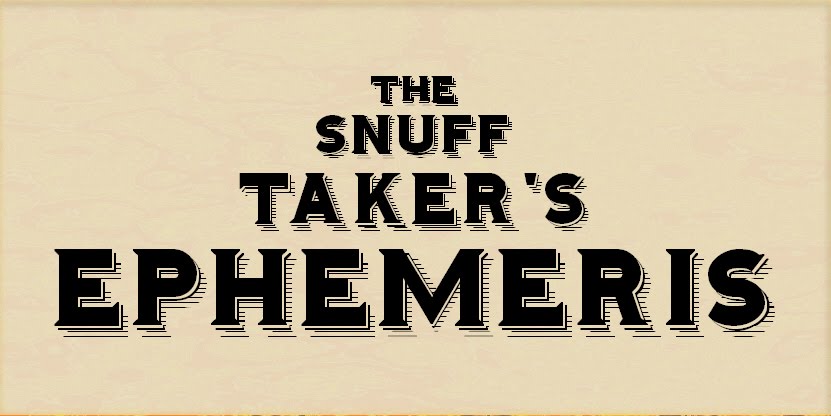While many of the improvements will have to remain top secret until vII hits the stands, we can hint at the following tidbits:
- More content. We're not positive of the page count, but it's going to be bigger than issue one.
- Wider format. The book is going to be slightly wider than issue one, meaning that we can cram even more spurious knowledge into each page.
- New writers. We're glad that you liked the featured authors in vI, but be prepared for some fresh faces in vII.
- Better print quality. No more smudged, crappy or blurred pics or ink. We hope.
- But most importantly:
So happy Thanksgiving to all of our readers across the globe, and know that we appreciate each and every one of you. Now, to address a topic that really sticks in my craw...
What the heck is wrong with the Canadian Postal System ?!?!?!?!
First off, their rates are ridiculous compared to the USPS. Do they handle each parcel with a velvet glove and sing it to sleep with a Canadian lullaby? Nope. They ignore the parcels and lock them in a deep, dark basement for weeks on end like Jame ‘Buffalo Bill’ Gumb. Then, when they run out of room in their cavernous warehouse of horror, they bulldoze the packages into the back of a horse-drawn wooden caravan and send it out for delivery. This delivery can take several days or several weeks, depending on the age and general health of the horse. At least, that's how I understand the process.
Secondly, why the HELL do they insist on keeping USA-shipped packages held up in customs for weeks on end? Do they think that my obvious shipment of a digest-sized magazine contains drugs or weapons? It makes no sense. And it shows the arrogance and corruption of a bloated government bureaucracy.
Now, the advice I kept hearing about shipping to Canada was to send it Priority Mail, as it would get there quicker and it could be tracked. So the first couple of issues that I shipped to Canada were sent Priority, until I realized that it cost about twenty dollars to ship one issue. Yeah, I love our Canadian readers, but I don't love them that much, heh heh.
Know that whoever tells you that shipping via Priority Mail is quicker than First Class to Canada is lying through their teeth. It makes no difference. The orders that we shipped to Canada were mailed out on 11/3-11/5. They are all still sitting in Canadian customs. Yep, three weeks. That's piss poor service. If I were Canadian, I would revolt. Oh wait, I forgot. Your government has effectively disarmed you so that you can't revolt. D'oh!
If you've ordered from Canada then I sincerely apologize for your book not getting there. We did ship them out, and they all got there on 11/6 and 11/8. Once it hits the border, it's out of our control. I love the Canadian people and their beautiful country, but I hate their postal system and government. To end on a positive note, I'll post the following letter from another Canadian, our featured columnist Jennifer Goldsmith:
Robbie,
I got your packet of books today. I'm pretty sure that you didn't rip the box open and stomp up and down on the magazines until they were tattered and torn, but that's the shape that they arrived in. (Sigh.) Gotta love Canada. On the upshot, they got here in 4.5 weeks, which is a pretty good for our customs officials! You might want to post something on the site that mentions orders to Canada might take up to a month to arrive, you never know.
Jenny
So, dear reader, don't feel bad. Not only do they hold up shipments to our readers, but they actually mangle packages sent to our columnists. That's sad.
Happy Thanksgiving!
RWH


